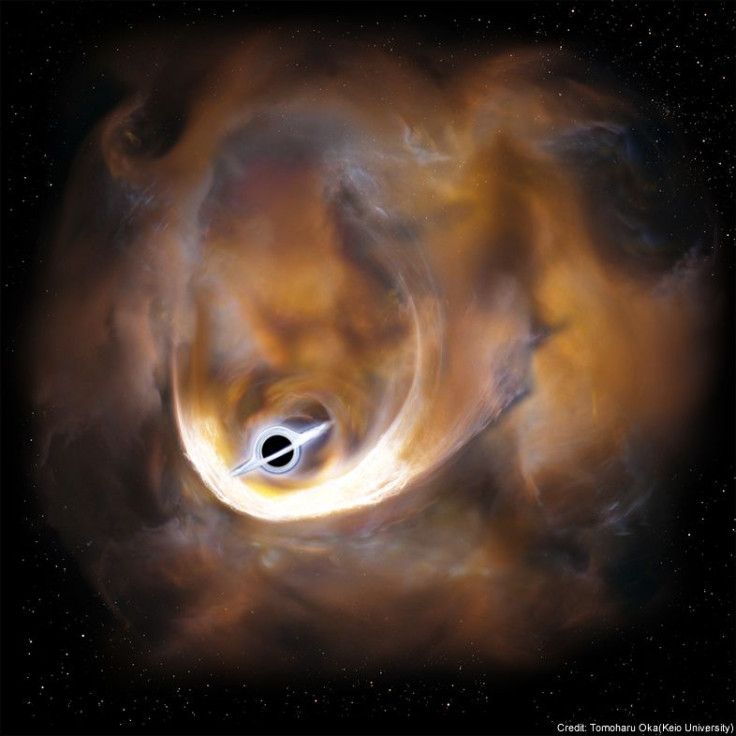Black Hole ‘Missing Link’ May Have Been Discovered In The Milky Way

Of the many enigmatic objects in our cosmos, there are none more shrouded in mystery than black holes. These objects, formed as a result of gravitational collapse of massive stars, are regions where space-time is so warped that not even light can escape their gravitational wells.
Most galaxies have one “supermassive” black hole in their heart, and until now, only a handful of galaxies harboring two black holes have been observed.
Now, just days after researchers at the University of Colorado in the U.S. said that they had spotted a double black hole-toting galaxy far, far away, a team of Japanese researchers, led by Tomoharu Oka, a professor at Keio University in Japan, claim to have done the same closer home. In a statement released Friday, the researchers said that they had detected signs of a black hole with a mass of 100,000 times the mass of the Sun near the center of our galaxy, the Milky Way.
“If that is the case, this is the first detection of an intermediate mass black hole,” the National Astronomical Observatory of Japan, which operates the Nobeyama radio telescope that was used to make the detection, said, in the statement.
Supermassive black holes can have anywhere between a few million and a few billion solar masses, and are present at the center of all galaxies. Observations suggest that these black holes are formed either due to the merger of smaller intermediate-size “seeds,” or a supermassive black hole seed from a giant star — about 100 times the sun’s mass — that ultimately forms into a black hole after it runs out of fuel and collapses.
If the gas cloud named CO-0.40-0.22, located only 200 light-years away from the center of the Milky Way, does contain an intermediate black hole, it would provide scientists an opportunity to test the theory that supermassive black holes evolve from these lower-mass seeds.
“These results open a new way to search for black holes with radio telescopes,” the observatory said, in the statement. “Recent observations have revealed that there are a number of wide-velocity-dispersion compact clouds similar to CO-0.40-0.22. The team proposes that some of those clouds might contain black holes.”
© Copyright IBTimes 2024. All rights reserved.






















